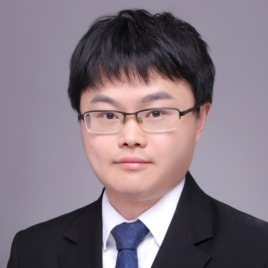Selected Papers from the 24th EuroSimE Conference
A special issue of Micromachines (ISSN 2072-666X). This special issue belongs to the section "A:Physics".
Deadline for manuscript submissions: closed (30 September 2023) | Viewed by 3862
Special Issue Editors
Interests: LED packaging and system integration; prognostics and health management; wide bandgap power electronics packaging and reliability modeling
Special Issues, Collections and Topics in MDPI journals
Special Issue Information
Dear Colleagues,
On behalf of the Editorial Board, we are pleased to propose a selection of papers presented at the 24th International Conference on Thermal, Mechanical and Multiphysics Simulation and Experiments in Microelectronics and Microsystems (EurosimE 2023) held in the city of Graz, Austria, April 16-17-18-19, 2023 (https://www.eurosime.org/). EuroSimE was created as the only annual international conference focusing on thermal, mechanical and multiphysical simulations and experiments for microelectronics and microsystems. The first conference was initiated in 2000 by the COMPETE network, with sponsorship from the European Commission, to meet research and development needs in microelectronics and microsystems. Since then, EuroSimE has garnered worldwide attention with participants from more than 30 countries, spanning all continents, and has become a fully sponsored IEEE CPMT technical event. The EuroSimE conference has earned a reputation for high scientific and technical quality. We hope that this Special Issue will be helpful to your work. We also welcome your feedback and suggestions for improving our work to provide you with valuable references in the future. We would also like to sincerely thank the journal Micromachines for its editorial support and constant assistance throughout the preparation of this issue.
Dr. Jiajie Fan
Dr. Véronique Rochus
Guest Editors
Manuscript Submission Information
Manuscripts should be submitted online at www.mdpi.com by registering and logging in to this website. Once you are registered, click here to go to the submission form. Manuscripts can be submitted until the deadline. All submissions that pass pre-check are peer-reviewed. Accepted papers will be published continuously in the journal (as soon as accepted) and will be listed together on the special issue website. Research articles, review articles as well as short communications are invited. For planned papers, a title and short abstract (about 100 words) can be sent to the Editorial Office for announcement on this website.
Submitted manuscripts should not have been published previously, nor be under consideration for publication elsewhere (except conference proceedings papers). All manuscripts are thoroughly refereed through a single-blind peer-review process. A guide for authors and other relevant information for submission of manuscripts is available on the Instructions for Authors page. Micromachines is an international peer-reviewed open access monthly journal published by MDPI.
Please visit the Instructions for Authors page before submitting a manuscript. The Article Processing Charge (APC) for publication in this open access journal is 2600 CHF (Swiss Francs). Submitted papers should be well formatted and use good English. Authors may use MDPI's English editing service prior to publication or during author revisions.
Keywords
- MEMS/NEMS
- microelectronics
- microsystems
- reliability
- simulation and modeling







